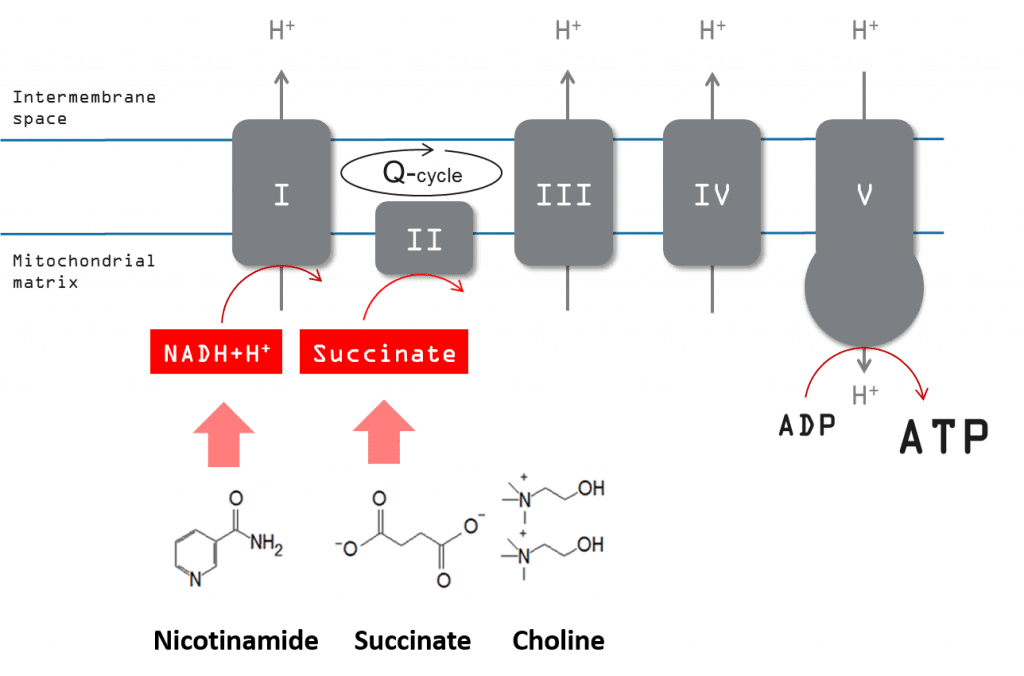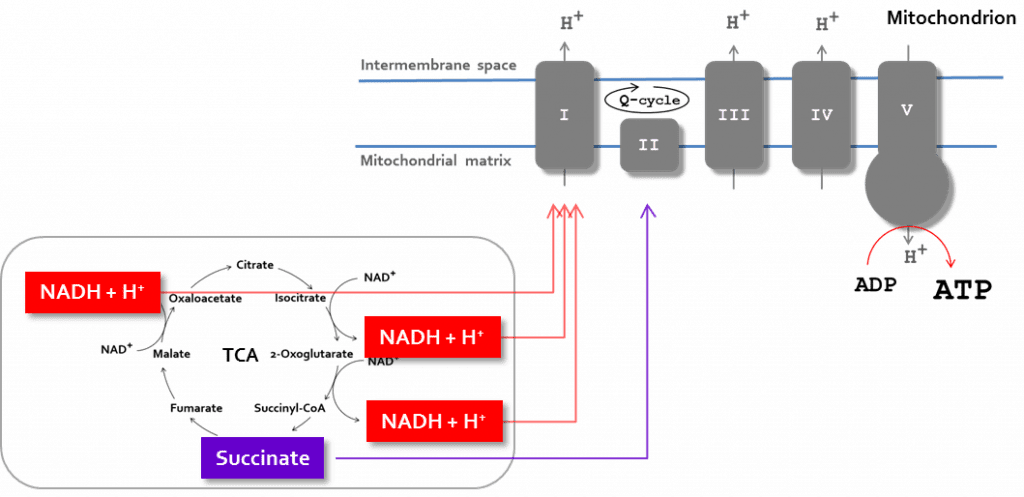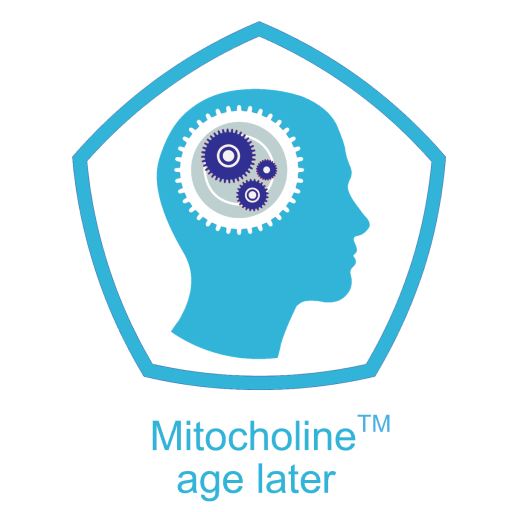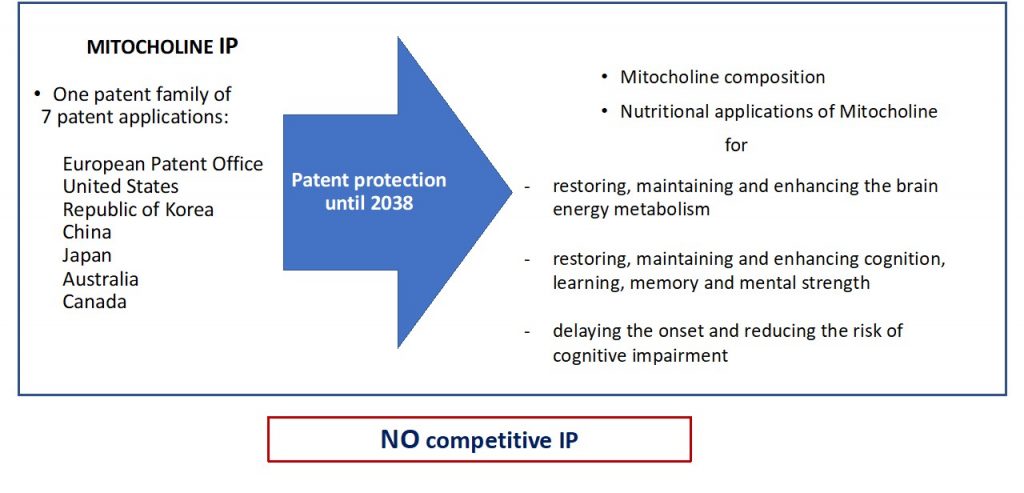The novel effect of MiBrainTM has been substantiated by MRS (magnetic resonance spectroscopy) measurements of energy reserves in the human brain, informal clinical trials and experimental measurements of energy levels ATP and NAD+ generated in single brain cells. We offer proprietary product for prevention and dietary management of symptoms and conditions associated with unbalanced or age-related slowed brain metabolism due to stress, disease and because of aging.
The concept was suggested some years ago, and evidence is increasing, that impaired brain energetics and decrease in production of adenosine triphosphate (ATP), the main currency of brain energy metabolism, in mitochondria is registered in all neurodegenerative disorders of ageing (NDA). Our innovative composition of naturally occurring compounds, MiBrainTM, has been developed as a nutritional fortification to increase ATP and NADH levels and is an exciting revolutionary strategy for counteracting NDA by improving and preserving mitochondrial bioenergetics: WO2019002858 – COMPOSITION.
A review by Cunnane et al, link published in July 2020, gives an excellent summary of where they believe the future areas of interest for research focus into NDAs should lie. The authors confirm that impaired brain energy metabolism is now recognised in NDAs and clearly precedes the onset of clinical symptoms. Metabolic defects occur at multiple levels, including reduced neuronal glucose uptake, impaired glycolysis and suboptimal function of the TCA cycle (tricarboxylic acid cycle) or the Krebs cycle, all of which adversely impact axonal transport, mitochondrial function and ATP production. The authors go on to state that optimisation of brain energetics should become a core component of future clinical trials of potential therapies for NDAs, irrespective of their mechanisms of action, because unless the brain energy gap can be reduced, potential benefits of new medications may well be missed.
MiBrainTM is the first and only composition for sustaining brain health through increase of insulin sensitivity simultaneously with the delivery of essential mitochondrial substrates for mitochondrial energy production. This is an innovative disruptive approach targeted at the maintenance of healthy brain metabolism via proper insulin action for longer, in order to prevent and delay onset of dementia in the general population.
Science
The phenomenon of brain insulin resistance is characterized by both metabolic and cognitive dysfunction. Brain insulin resistance is linked with impaired metabolism and impaired cognition and mood. In 2007 the mechanism of insulin receptor activation in the brain has been discovered. It was demonstrated that mitochondrial substrate – succinate facilitates neuronal insulin receptor activation. Succinate promotes insulin function in the brain.
Learn more

References:
Storozhevykh TP, Senilova YE, Persiyantseva NA, Pinelis VG, Pomytkin IA. Mitochondrial respiratory chain is involved in insulin-stimulated hydrogen peroxide production and plays an integral role in insulin receptor autophosphorylation in neurons. BMC Neurosci. 2007 Oct 8;8:84.
Pomytkin IA. H2O2 Signalling Pathway: A Possible Bridge between Insulin Receptor and Mitochondria. Curr Neuropharmacol. 2012 Dec;10(4):311-20.
Persiyantseva NA, Storozhevykh TP, Senilova YE, Gorbacheva LR, Pinelis VG, Pomytkin IA. Mitochondrial H2O2 as an enable signal for triggering autophosphorylation of insulin receptor in neurons. J Mol Signal. 2013 Oct 5;8(1):11.
Learn more
MiBrainTM is a novel chemical composition which for the first time targets insulin resistance simultaneously with the support of the energy generating machinery (mitochondria) in the brain cells.
The generation of adenosine triphosphate (ATP) energy-carrying molecule, found in the cells is based in mitochondria. ATP captures chemical energy obtained from food molecules and is used to fuel other cellular processes. The conversion of nicotinamide adenine dinucleotide (NAD+) to (NADH) is an essential step for mitochondrial synthesis of intracellular ATP –intracellular fuel.

Numerous clinical studies have demonstrated that NAD+ levels decrease with age, including studies that report reduced levels in the brain. (1, 2, 3).

References:
1. Zhu XH, Lu M, Lee BY, Ugurbil K, Chen W. In vivo NAD assay reveals the intracellular NAD contents and redox state in healthy human brain and their age dependences. Proc Natl Acad Sci U S A. 2015 Mar 3; 112(9): 2876-81.
2. Gomes AP, Price NL, Ling AJ, Moslehi JJ, Montgomery MK, Rajman L, White JP, Teodoro JS, Wrann CD, Hubbard BP, Mercken EM, Palmeira CM, de Cabo R, Rolo AP, Turner N, Bell EL, Sinclair DA. Declining NAD(+) induces a pseudohypoxic state disrupting nuclear-mitochondrial communication during aging. Cell. 2013 Dec 19;155(7):1624-38.
3. Verdin E. NAD⁺ in aging, metabolism, and neurodegeneration. Science. 2015 Dec 4;350(6265):1208-13
MiBrainTM components work in synergy providing sensitization of the insulin receptors and delivering essential nutrients to mitochondria.
Nicotinamide is NAD+ precursor and succinate in unique highly bioavailable form provides both short- and long-term improvement of energy metabolism due to sensitization of the brain insulin receptors, which are involved in a wide range of normal brain functions, such as reward, motivation, cognition, attention, and memory formation.

MitocholineTM is a lifestyle solution.
